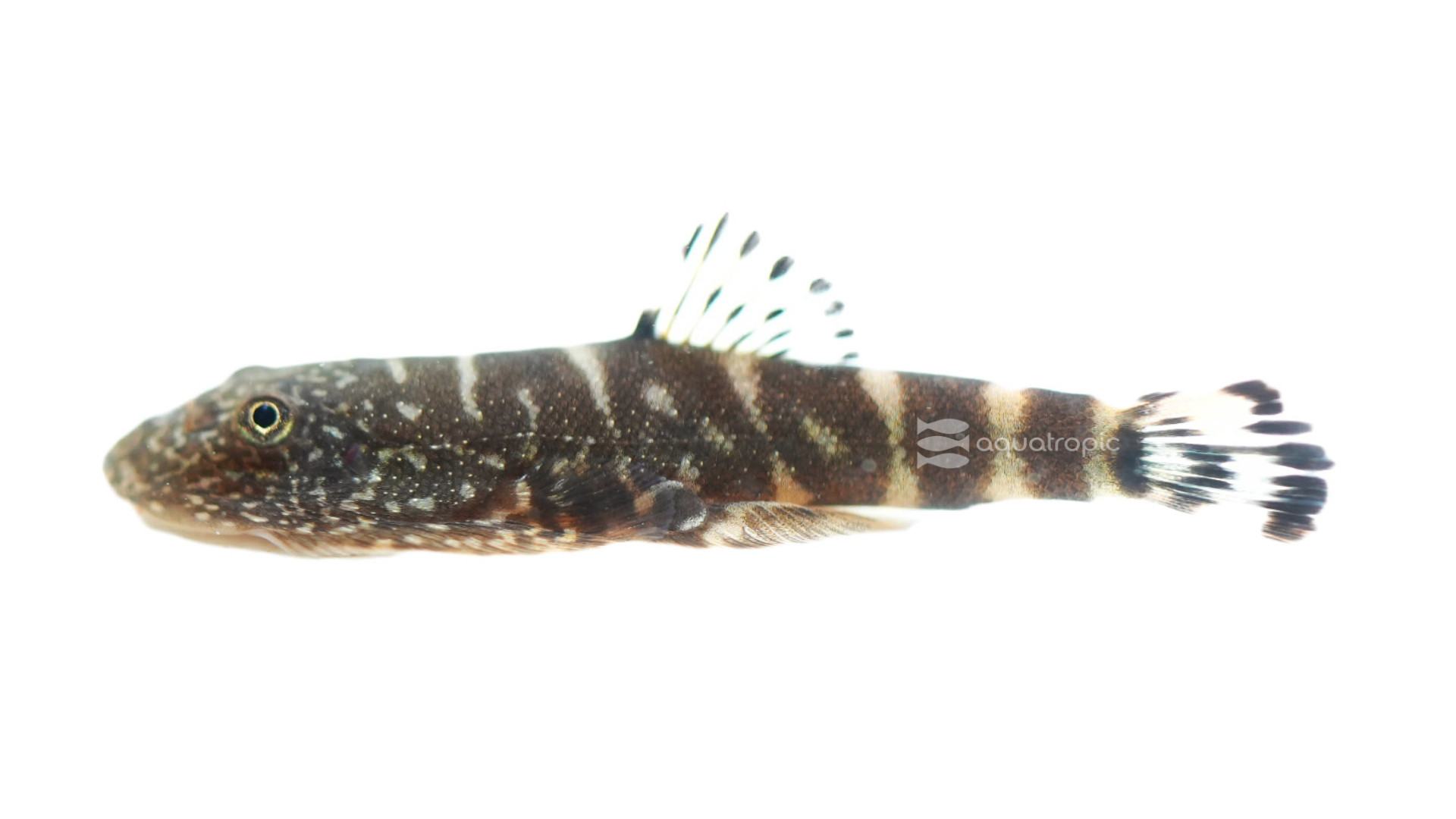The Bottom Dwelling Yellow Fin Sucker Loach

The Yellow Fin Sucker Loach is a bottom dwelling fish, native to fast moving, shallow, clear water streams of Borneo, some species being restricted to single rivers there. The Loach's body shape allows it to point itself toward flow and yet stay attached to rocks in fast current while grazing on the surface films that grow there. They are most often found in riffles, and both just above and below waterfalls.
The genus Gastromyzon, to which this fish belongs, offers aquarium enthusiasts a few very similar Loaches to the yellow fin. Three of these species have very similar appearances; they all have a greenish black body with cream stripes, they all get to just about the same adult size of just over two inches long, and they all have a very similar body shape. There is some variation between the species in the number of the cream-colored stripes, but there is also some variation within each species as to the same number, so they can be confused by all but the most detailed fin ray counters. These three species are Gastromyzon viriosus, Gastromyzon zebrinus, and Gastromyzon ocellatus.
Yellow Fin Sucker Loaches need very well-oxygenated water. The easiest way to keep oxygen levels high in an aquarium is to maintain high overturn and keep the temperature low. To this end, we suggest having a very large filter, one capable of turning over the entire volume of your display at least 15 times per hour. One could also use extra flow devices and / or diffuser stones to add more oxygen and flow to their tank. In regard to temperature, colder water holds oxygen (and indeed all gasses) better than warm water. As a result, our suggestion is to keep these fish in water between 65- and 75-degrees Fahrenheit. They can be kept in warmer water than this, even up to 80, but oxygenation effort will need to be intense. They are not overly picky about hardness of the water in the display, but water should be slightly acidic (6-7pH), and low in nutrients. Regular water changes will help keep nutrients low, but the surfaces of the tank (except for viewing surfaces obviously) should be allowed to grow algae, as this is the natural food for these Loaches.
Outside of the flow requirements, tanks needn't be too large; a 20-gallon aquarium would be sufficient to house a small group of three to five, which is how we recommend keeping them. Substrate should be rounded pebbles, like those you would find in a river bottom, as well as larger rounded stones or boulders. Driftwood can be utilized, but it should be old, so it doesn't stain the water. Any plants that could work in this environment shouldn't be a problem. Anubias are a favorite as they offer a large amount of surface area for biofilm to grow on, a favorite food of the Loach. Because this fish can actually climb glass, a tight-fitting lid for your aquarium display is a must.
Feeding the Yellow Fin Sucker Loach is pretty straightforward. Their primary food source in the wild is benthic (on the bottom) algae as well as the little critters consumed with it. One of your primary goals as a fish keeper in regard to feeding these Loaches is to maintain an environment that grows this alga readily. Tanks for this fish should be mature, with clear water and plenty of surfaces for this alga to grow. Some people go so far as to keep an “algae nursery” in which they keep rocks that grow algae on them to be put into the display aquarium as supplemental food. Our highest recommendation for commercial food is Nutramar's Shots, which are perfect as they can get stuck to glass where the Loach can happily graze on it. They will usually also take meatier foods like the Spirulina Loaded Brine from Gamma Foods, but be careful of offering too much protein, which can give the Yellow Fin Sucker Loach digestive issues. Some hobbyists use sponge filters inside their display as they will naturally conglomerate and grow food for the Loaches.
The Yellow Fin Sucker Loach is a peaceful fish and can be kept with other community minded fishes that enjoy the same habitat as Rasboras and Danios. Other stream dwellers that are not aggressive such as Rhinogobius could also be on the list. If you're interested in a super interesting, peaceful community fish, then look no further than a small group of Yellow Fin Sucker Loaches. They are beautiful, not overly hard to keep and have interesting interactions with each other and the community at large. Head over to your LFS and ask about sustainably sourced Yellow Fin Sucker Loaches from Aquatropic today!